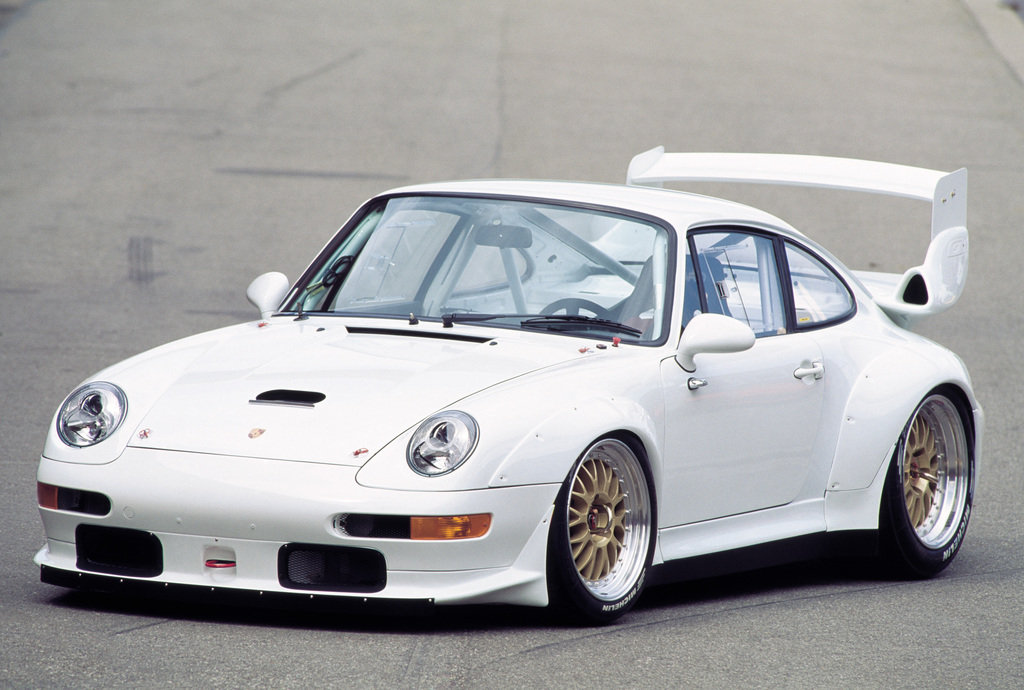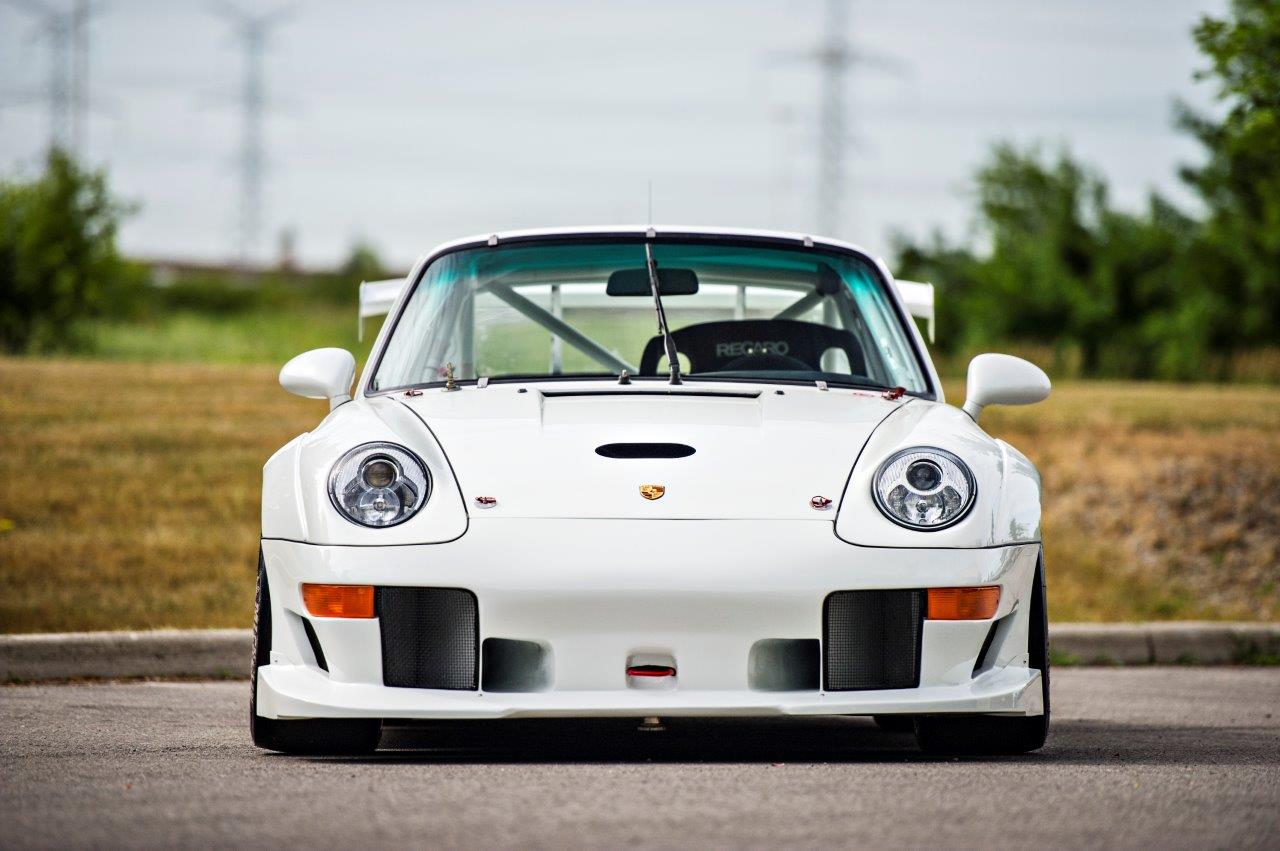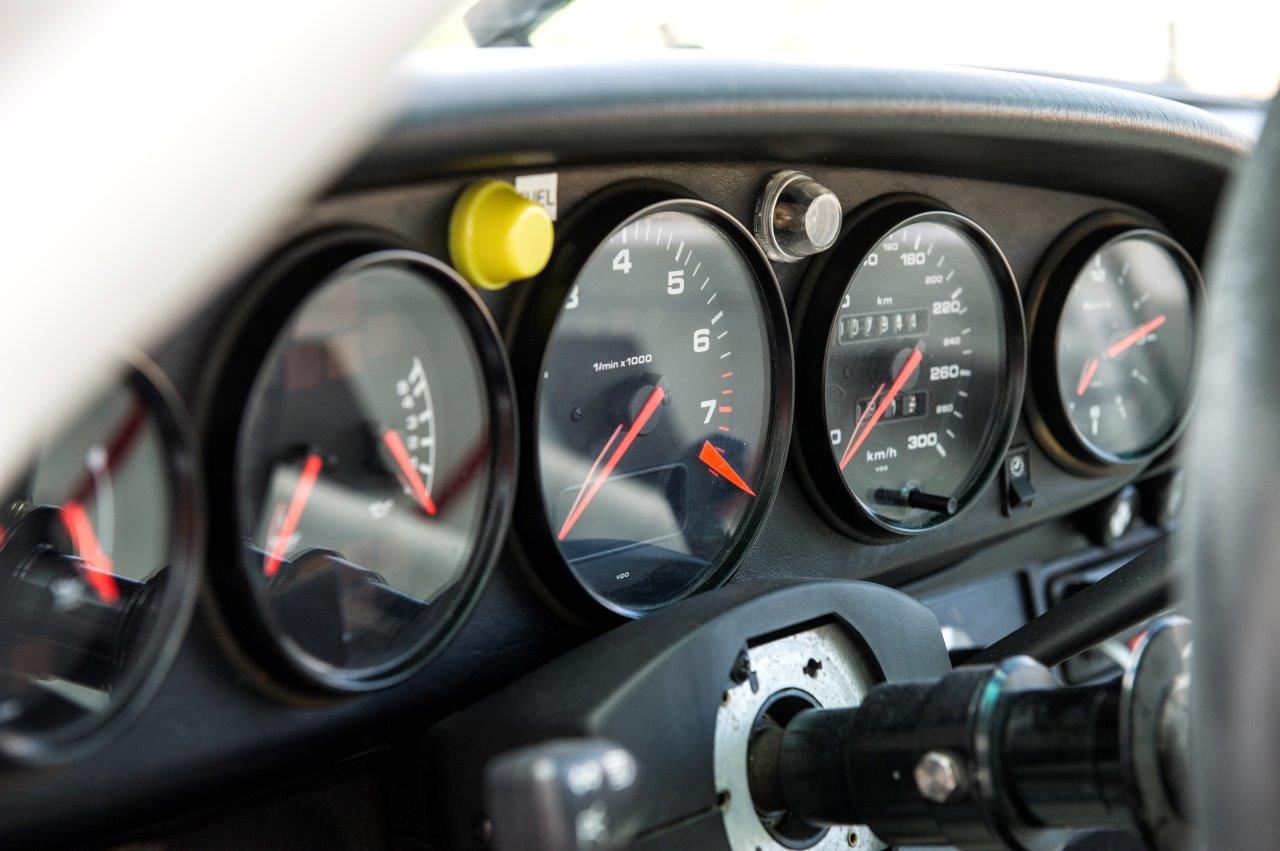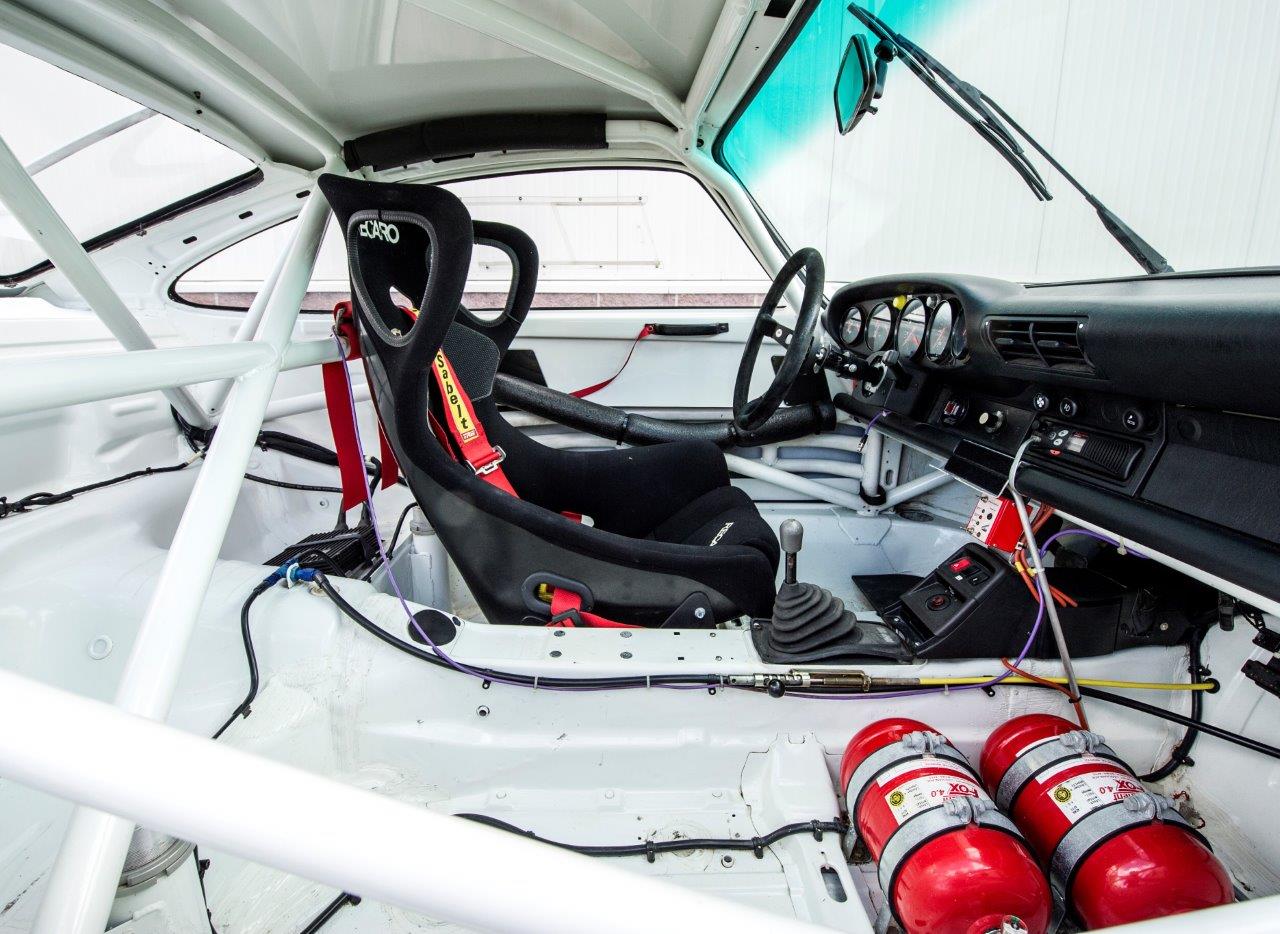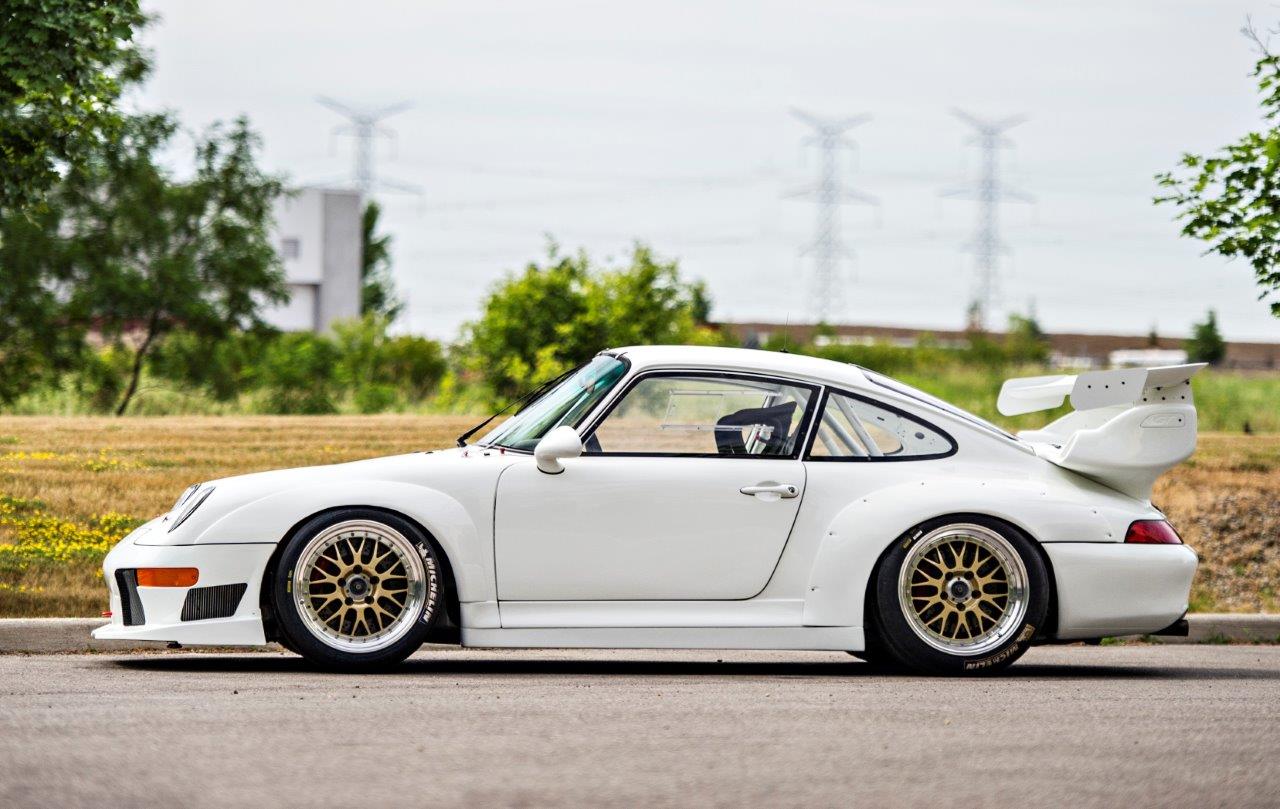(1996 – 1998) Porsche 911 GT2 Evo (993) – Ultimate Guide
Porsche responded to the reorganization of international GT racing with a series of homologation specials beginning with the naturally aspirated 911 RS and culminating in the GT2 Evo. The lightweight RS set the basic template, using a non-turbo air-cooled flat-6 punched out to 3.8L and rated at 300 bhp, bolt-on Turbo-style wheel-arch flares, larger brake discs clamped by 4-piston calipers and adjustable front and rear anti-roll bars. More obviously equipped for the track, the RSR incorporated a full roll cage, a front strut brace, an adjustable tail spoiler, 6-point harnesses and a fire extinguisher.
The subsequent GT2 combined the RS/RSR’s purity of purpose with a tuned version of the 993 Turbo’s twin-turbocharged engine rated at 444 HP. Essentially a street legal race car, the GT2 sported an aggressive-looking front spoiler with upturned side winglets, wider bolt-on wheel flares and a huge rear spoiler with integrated air scoops. Using 2-wheel drive instead of the production Turbo’s all-wheel system shaved even more weight, resulting in a top speed of almost 190 MPH and road-holding that bordered on the supernatural. Porsche needed something more extreme to race in GT1 events so it developed the 911 GT2 Evo. Designed to compete in FIA GT1, it incorporated a twin turbocharged 3.6L flat-6 engine rated at a full 600 hp and 490 ft lbs of torque.
The “base” 911 GT2 race car, utilizing a steel 993 Twin Turbo chassis with modifications for racing, scored numerous victories in a wide variety of racing venues. With its carbon fiber bodywork stretched to house ultra-wide wheels and race tires, the GT2 displays an awesome presence. The 993 GT2 race car featured a stripped interior, integrated rollcage for safety, minor adjustments to the bodywork and wings in order to decrease weight as well as increase downforce, and wider fenders to handle racing slicks. The suspension was modified to improve racing performance, while the engine was slightly tweaked for endurance. Twin KKK turbochargers, fitted with required air restrictors, allowed for 335.7 kW (450 hp).
The GT2’s turbocharged, 3.6-liter flat-six unit was already impressively powerful at 424 horsepower and 400 pound-feet in 1995, but Porsche knew that it wasn’t enough for the GT1 class. To make its 993 GT2 even more radical, Porsche reduced its weight to 1,100 kg and fitted it with a larger turbo-charger (KKK27 with 40.4 mm restrictors). The linkage, pistons, camshafts, oil pump and even the injection and exhaust system have been optimized. The two turbos are more powerful and have a separate bypass. By modifying several other engine components too, Porsche managed to get 600 horsepower and 491 pound-feet from the engine, making the GT2 EVO the most powerful 911 in history at the time. It was fast too, with sprint from 0 to 60 mph was over in about 3.3 seconds and top speed was rated at 187 mph.
The 3.6-liter engine used a six-speed transmission to send the 600 horses to the rear wheels. The gearbox was retuned to handle the extra power, as were the chassis, suspension, and braking systems. For the Evo, which inherited the modified body of the 911 GT2, the regulation allowed wider tires. The wings were therefore enlarged still further. But that’s not all. The aerodynamics received particular attention, with a very high rear spoiler and a completely redesigned front spoiler with generous air intakes. The 911 GT2’s base was reinforced with a welded safety bar, quick-open hood fasteners, an Air Lift System, and side air intakes for the turbocharger, and the optimized front spoiler with additional air intakes was designed for the ventilation of the brakes and oil radiator. There were also ventilated, perforated brake discs, ABS and an electro-hydraulic assisted foot brake.
Up front, the EVO and the GT2 were pretty much the same in terms of shape and size. Both shared the same wide wheel arches, headlamps, and hood (except for the latter’s additional vent on the EVO). However, the EVO’s bumper was completely redesigned. The daytime running lights and the lower vent were removed to make room for two larger intakes, two smaller cooling vents, and a racing tow hook. The splitter was also remodeled for enhanced aerodynamics and optimized airflow toward the front brakes. The front hood received quick-release pins, while the windscreen gained safety locks.
Moving onto the sides, Porsche gave the EVO larger side skirts and new, race-spec BBS wheels with gold spokes that were wrapped in high-performance, wider Michelin tires. The standard side windows were replaced by race-spec, lightweight panels. Around back, the already massive wing of the GT2 received yet another wing on top, resulting in a two-tier aero device that was as high as the roof. The engine hood gained quick-release pins, while the bumper was modified to accept an extra pair of exhaust pipes in the middle. Another interesting fact is that the usual “GT2” badge was replaced with a “GT” on the wing.
The EVO’s interior was as race-ready as they get. Unlike the GT2, which was based on the RS and had a traditional layout for a road-going sports car, the GT2 EVO was modified to FIA specifications. The dashboard is pretty much the only feature that was kept from the standard GT2. Porsche added a new steering wheel wrapped in Alcantara for enhanced grip, replaced the door panels with lighter units, and stripped the carpet off of the floor and center tunnel. Only the driver’s seat was left in place, but the rather comfy leather seat in the GT2 was replaced with race-spec Recaro with Sabelt harnesses. The coupe was also equipped with an FIA-approved full roll cage and a fire extinguishing system.
The GT2 Evo was short-lived, with only 11 ever made, as Porsche decided to replace it with the purpose-built 911 GT1 in 1996. Notable results from 1996 include a second place in the 2 Hours of Dijon. 1998 was by far the EVO’s most successful year with wins at 4 Hours of Paul Ricard and Mosport and 10 podiums in in various events in Europe and North America. In 1999, it won two races at Monza, while in 2000 it triumphed twice in the Spanish GT of Jarama. The 911 GT2 EVO was also raced at Daytona, Sebring, and Le Mans, but without significant results other than a fifth and sixth place finish at Daytona in 1997 and a sixth place at Sebring in 1996.
Below Photos Are From Mecum’s 2017 Original Spring Classic auction in Indianapolis


